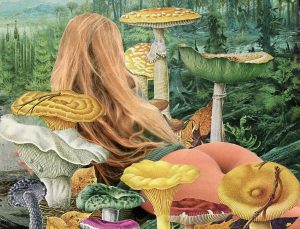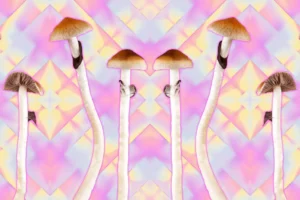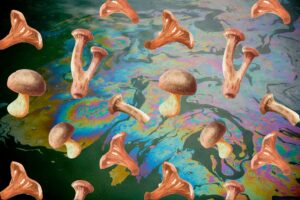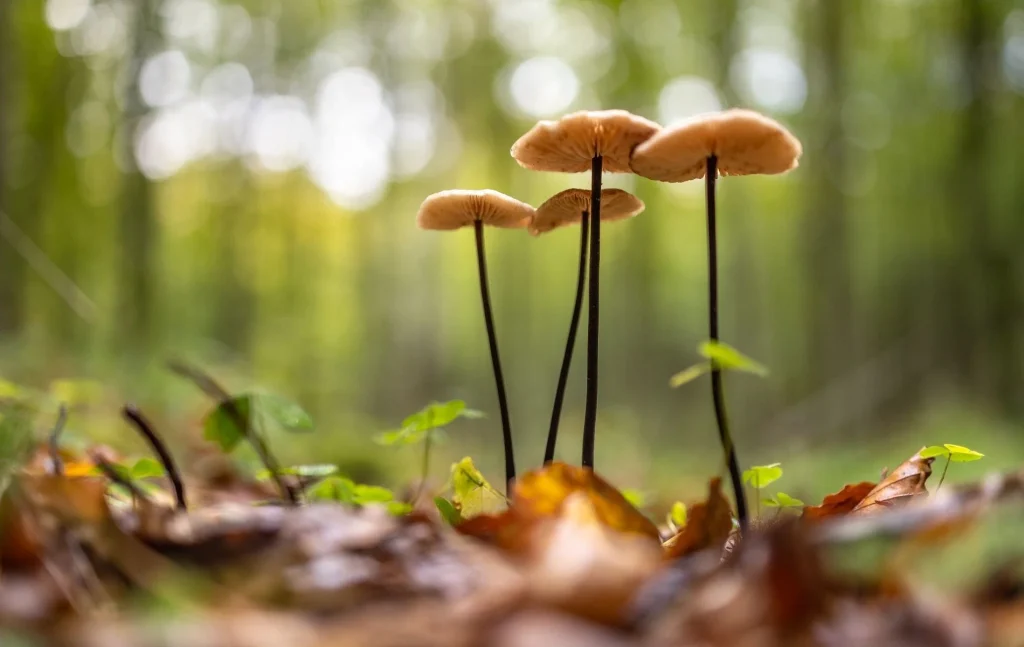Uncategorized
Sage Wisdom and Tropical Muses: Navigating the Diverse World of Psychedelic Fungi
Journey into the lesser-explored realms of psychedelic fungi, beyond the well-known psilocybin. In this exploration, we unveil the mystical potential held by lesser-known fungi, offering a glimpse into the diverse world of psychedelic experiences beyond the familiar magic mushrooms.
The Fungi Mosaic

Beyond the widely acknowledged psilocybin-containing mushrooms lies a diverse tapestry of often-overlooked fungi, each contributing its unique chapter to the mesmerizing narrative of psychedelic experiences. This vibrant mosaic encompasses a spectrum of lesser-known species, each harboring its distinct psychoactive compounds that beckon the adventurous seeker into uncharted realms of consciousness. From the iconic red-capped Amanita muscaria, steeped in folklore and mystery, to the enchanting Psilocybe cyanescens with its distinctive blue staining reaction, the world of psychedelic fungi unveils itself as a rich and varied landscape. This exploration is an invitation to delve into the nuances of these fungi, exploring not only their chemical compositions but also the potential for profound and mystical experiences that transcend the boundaries of ordinary perception. The phrase “Psychedelic Fungi” serves as a gateway into this kaleidoscopic world, where each fungus contributes its unique hues to the broader canvas of psychedelic exploration.
Amanita muscaria: Unraveling the Enigma of the Fly Agaric
Step into the mystical world of Amanita muscaria, often referred to as the fly agaric, as we unravel the enigma surrounding these iconic psychedelic fungi. Beyond its vibrant red cap and white speckles, Amanita muscaria carries a rich tapestry of cultural and historical significance. Revered in folklore and mythology, this fungus has been associated with spiritual rituals, shamanic practices, and even Christmas traditions in certain cultures. While commonly recognized for its toxic properties, Amanita muscaria harbors lesser-known psychedelic potential. Containing compounds such as muscimol and ibotenic acid, this fungi induces altered states of consciousness when consumed in the right context and preparation. Its use in shamanic ceremonies suggests a deeper connection to realms beyond the physical, inviting those who partake to explore the thresholds of perception. Amanita muscaria, with its dual nature as both poison and entheogen, stands as a testament to the intricate relationships between humans and psychedelic fungi throughout history, beckoning curious minds to delve into its mysterious and transformative properties.
Psilocybe Cyanescens: Blue Halos and Enchanted Forests

Mesmerizing journey into the enchanting realm of Psilocybe cyanescens, an intriguing and lesser-known psychedelic mushroom that captivates with its distinct characteristics. What sets this species apart is its remarkable blue staining reaction, a phenomenon attributed to the presence of psilocin and psilocybin, the psychoactive compounds responsible for its potent effects. As individuals venture into the habitats where Psilocybe cyanescens thrive, they are met with the allure of enchanted forests, where reality and perception intertwine. The reported subjective experiences paint a vivid picture of a world transformed, with users describing mesmerizing visual enhancements such as vibrant colors, intricate patterns, and a profound connection to nature. The blue halos, a testament to the mushroom’s unique chemistry, become a visual manifestation of the altered state induced by these potent fungi. As explorers navigate through the enchanted forests of Psilocybe cyanescens, they often recount a heightened sense of introspection, spiritual connection, and a deep appreciation for the interconnectedness of all things. The allure of this lesser-known psychedelic mushroom lies not only in its distinctive blue staining but in the enchanting experiences it facilitates, inviting those who dare to venture into its realm to witness the magic within the heart of the forest.
Salvia Divinorum: Sage Wisdom in a Psychedelic Leaf
A profound exploration of Salvia divinorum, a remarkable psychedelic plant indigenous to Mexico, known for its distinctive properties and historical significance in traditional shamanic practices. Often referred to as the “Sage of the Diviners,” Salvia divinorum has been utilized by indigenous Mazatec shamans for centuries in ceremonial rituals aimed at gaining spiritual insights and connecting with the divine. The plant contains the psychoactive compound salvinorin A, which induces intense, but relatively short-lived, psychedelic experiences. Those who have consumed its leaves report entering a surreal realm characterized by vivid visual distortions, altered perceptions of time and space, and a profound sense of detachment from reality. The fleeting nature of Salvia divinorum’s effects adds to its enigmatic allure, distinguishing it from other psychedelics. Despite its potency, Salvia divinorum remains largely understudied, contributing to an air of mystery surrounding its psychotropic properties. As interest in psychedelic exploration grows, the unique characteristics of Salvia divinorum beckon enthusiasts and researchers alike to delve into the intricate tapestry of its effects, uncovering the sage wisdom embedded within its psychedelic leaves.
Copelandia Cyanescens: The Hawaiian Blue Meanie

Journey to the lush Hawaiian islands, where the mystical Copelandia cyanescens, affectionately known as the “Hawaiian blue meanie,” await discovery. These small but potent mushrooms have long been revered for their powerful psychedelic effects, leading seekers on profound spiritual journeys. Indigenous to the Hawaiian archipelago, Copelandia cyanescens holds a significant place in certain cultural and spiritual practices, serving as a conduit between the earthly realm and the divine. The vibrant blue hues of these mushrooms, combined with their mind-altering properties, contribute to their enigmatic allure. As individuals partake in the consumption of these psychedelic fungi, they often experience heightened sensory perception, intense introspection, and a deep connection to the natural world. The Hawaiian blue meanie has become a symbol of transcendence and self-discovery, intertwined with the rich tapestry of Hawaiian traditions. Beyond its recreational use, these mushrooms are regarded as sacred tools for unlocking the mysteries of the mind and spirit, offering a unique lens through which to explore the realms of consciousness in the breathtaking backdrop of Hawaii’s tropical paradise.
Claviceps purpurea
Claviceps purpurea, a fungus that infects rye, holds a fascinating historical connection to the synthesis of LSD, illuminating the alchemy that transformed this natural psychedelic agent into an iconic substance in psychedelic history. This intriguing journey begins with the discovery of ergot alkaloids present in the fungus, particularly lysergic acid. Dr. Albert Hofmann, a Swiss chemist, played a pivotal role in unraveling the secrets of Claviceps purpurea and synthesizing lysergic acid diethylamide (LSD) in 1938. While originally researching the potential medicinal uses of ergot derivatives, Hofmann inadvertently ingested a small amount of LSD and experienced its hallucinogenic effects. This accidental discovery marked the birth of LSD as a potent psychedelic, triggering a paradigm shift in the understanding of consciousness and opening the doors to a new era of psychedelic research. The alchemical processes involved in this transformation showcase the intricate interplay between nature and human ingenuity, resulting in the creation of a substance that has left an indelible mark on the realms of science, medicine, and culture.
Panaeolus Cyanescens: The Tropical Muse
Discover the tropical muse, Panaeolus cyanescens, and its presence in various regions worldwide. Explore the reported psychedelic experiences induced by this lesser-known fungus, known for its small size but potent effects, offering a unique perspective within the realm of psychedelic fungi.


